NYC's Concert Inside a Sewer Tunnel
An evening of adventure, experimental music, and waterfront views at an unusual music festival inside an NYC sewer tunnel!


In the film Oppenheimer, leading this year’s Oscar race with thirteen nominations, J. Robert Oppenheimer’s early life in New York City is touched upon briefly in two early scenes. But the movie, which is a focused adaptation of the Pulitzer Prize-winning book American Prometheus by Kai Bird and Martin J. Sherwin, centers primarily on the research and building of the atomic bomb in the lead-up to World War II. In fact, life in New York really forged the scientist from an educational and ethical standpoint.
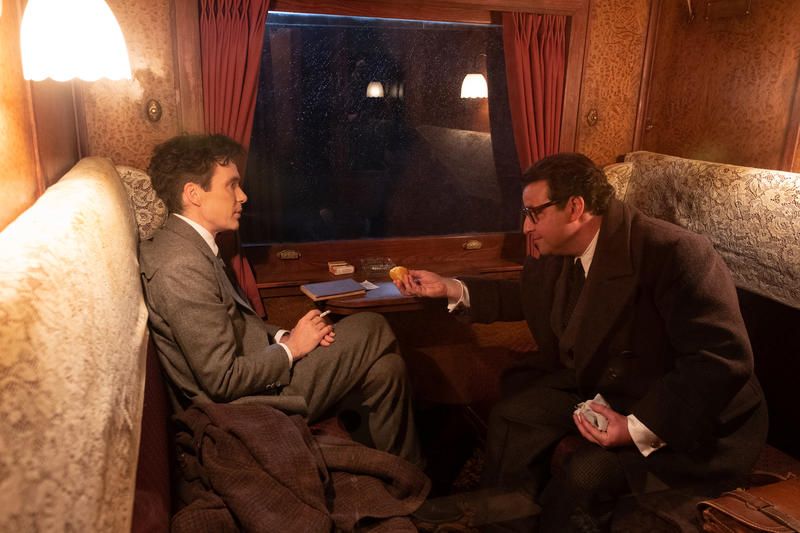
In one scene, a young Oppenheimer gives a speech entirely in Dutch in a lecture hall in the Netherlands and later meets his future friend Isidor Rabi on the train. “I caught some of your lecture on molecules. Caught some of it—we’re a couple of New York Jews—how do you know Dutch?” And later in Zurich. Rabi tells Heisenberg that Oppenheimer is pining for the canyons of Manhattan. “The canyons of New Mexico” Oppenheimer corrects. Heisenberg then asks Oppenheimer, “You’re from New Mexico?” and Oppenheimer answers, “New York, but my brother and I have a ranch outside Santa Fe. That’s the America I miss right now.”
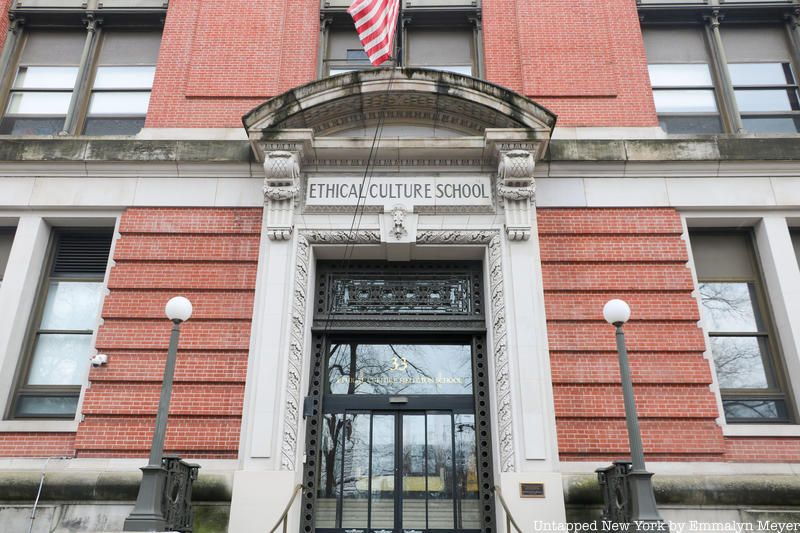
In our latest episode of The Untapped New York Podcast, we first dive into Oppenheimer’s early life in New York City, We discuss the places in which Oppenheimer and his parents lived, where they worked, and went to school such as their full-floor apartment on Riverside Drive containing an extensive Impressionist art collection, the Society for Ethical Culture where Robert Oppenheimer went to school, a building in Soho where his father worked, the New York Mineralogical Society, and more. William Rukeyeser, whose mother was in the same class as Oppenheimer tells us that “There was a scorch mark and dent in the ceiling above a table with bunson burners in Fieldston’s chemistry lab. Students would point at it and say, ‘”That’s Oppie.'”Apparently he liked the explode things long before WWII.” And then we discuss in the podcast how New York City is directly connected to New Mexico in Oppenheimer’s story.
In the second half of the podcast, you’ll hear an interview with Oppenheimer’s production designer Ruth de Jong, who is nominated for an Oscar for Best Production Design. Her specialty is merging on-location shoots with realistic immersive sets that seamlessly put the viewer right into the story. Ruth explains how Los Alamos and the Trinity testing site were created, which was an impressive feat of film set design, as well as shooting on-site at the Institute for Advanced Study in Princeton, where Albert Einstein and Oppenheimer both worked.
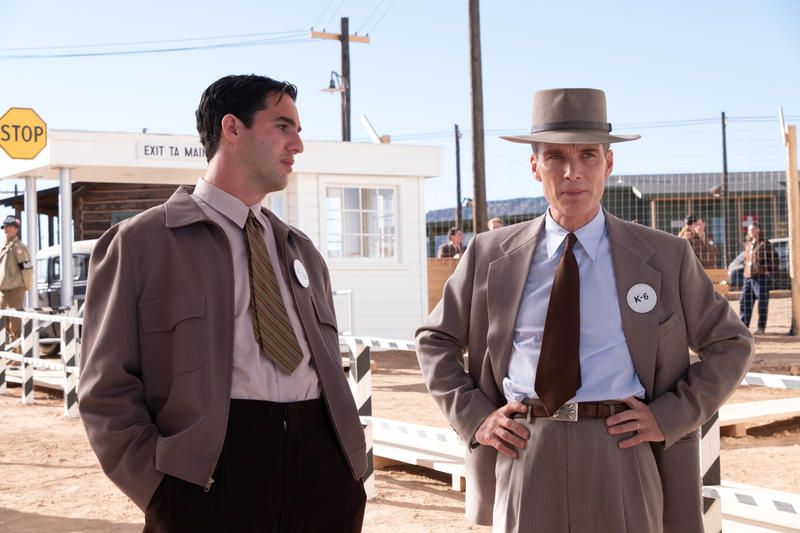
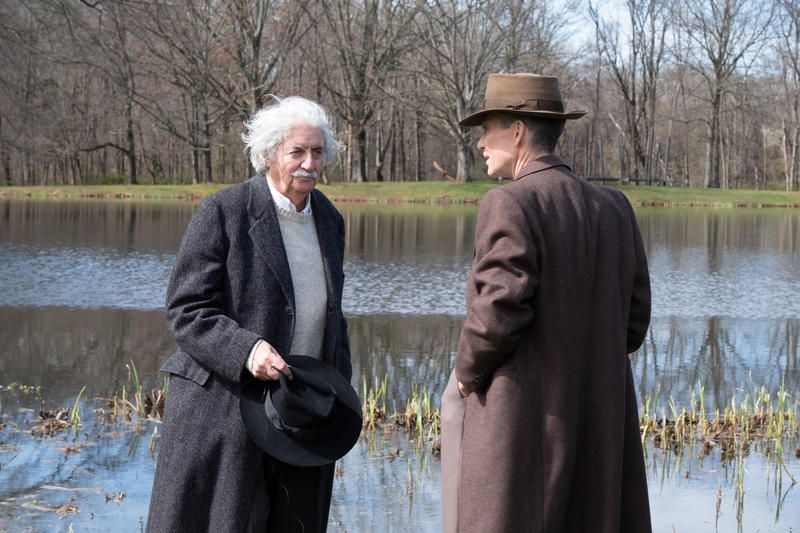
One of the most fascinating things we learned from speaking to Ruth was the process by which she recreated Los Alamos. Using historic photos, town plans, and maps, she and her team made a version of Los Alamos appear out of the New Mexico desert, much like it did so many decades ago. It began with sketches Ruth made, followed by model making at a quarter scale of every building in the set. It took a mix of deep research, architecture, and urban planning to create a new town that evoked Los Alamos, worked within the budget of the film, and functioned from a cinematography standpoint.
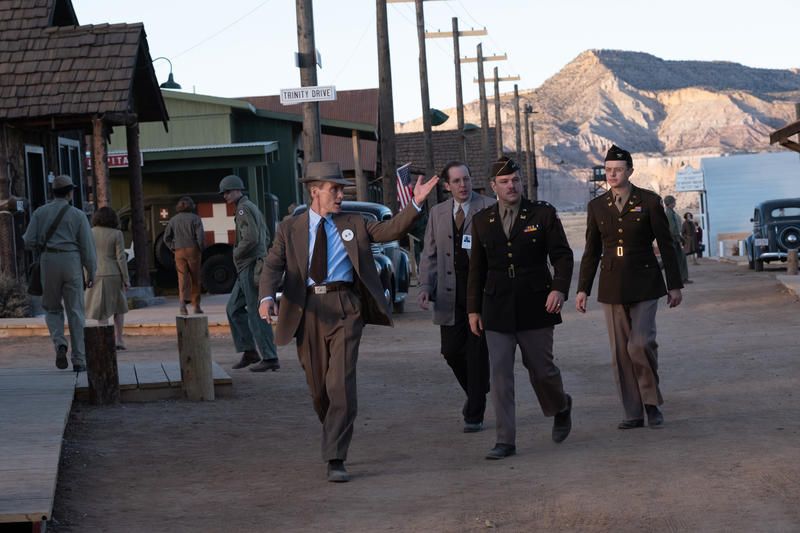
The original Los Alamos was built at a cost of $2 billion (or $42 billion in today’s dollars), expanding from a boys’ school that was already there. Clearly, it would be impossible and impractical to build Los Alamos exactly how it was, but high up on a plateau in New Mexico, Ruth created a town center at a T-intersection which contained all the main elements that existed at Los Alamos, including Oppenheimer’s office, a movie theater, a hospital, a school, leading into the technical area of Los Alamos with the labs. In the reconstruction of the Trinity testing site, the test tower was built exactly to spec, constructed to the same original height of 106 feet.
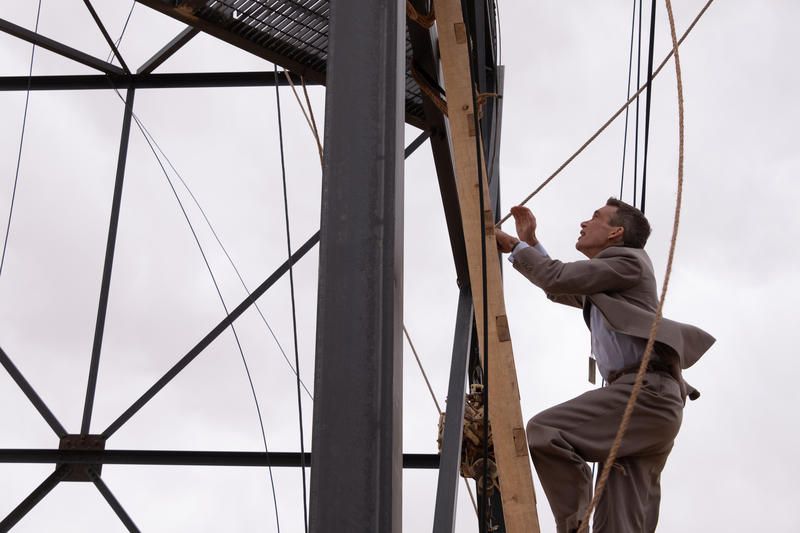
Together with director Christopher Nolan, Ruth built worlds for Oppenheimer that all feel authentic and lived in, and could be filmed from all angles—all 360 degrees. “My goal was to bring the audience right to that place in that space, and not have them doubt for a second, but they weren’t there,” says Ruth. A key factor in conveying that sense of realism was a dedication to shooting on location, which is one of Ruth’s specialties. She tells us, “I love to build practically on location. I think there’s nothing greater. A soundstage can’t give you what the sun, the wind, the elements, the snow, the rain, there’s a factor there that brings a realness and a rawness and just a truthfulness…because there are variables and the variables are what bring it to life…I just commend Chris for being a director that embraces that desire, that pushes for that, because I’m going to tell you, it’s not easier.”
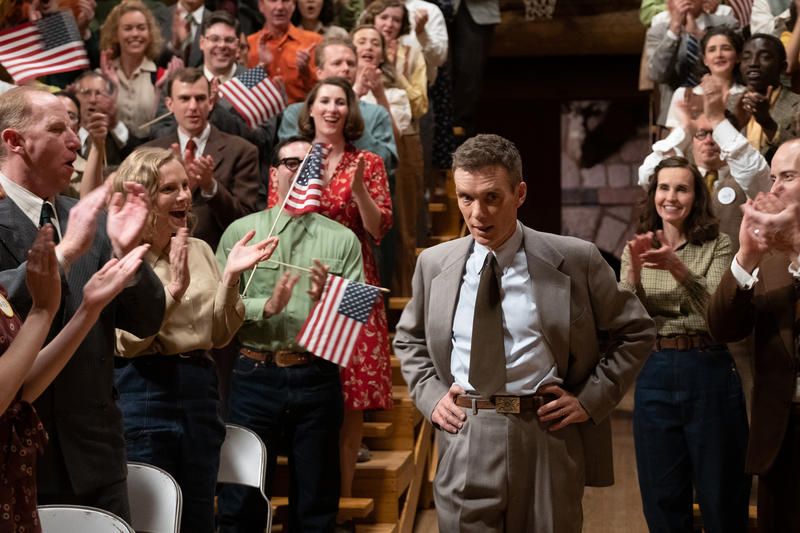
Great attention was also paid to dressing the sets—not making them feel like time capsules but true to the characters and the story. Instead of aiming for exact historical accuracy, the goal was, according to Ruth, to “lean into minimalism and subtlety and things keep it from being overstated or overly hitting you over the head with ‘We are in 1943.’ Just trying to lean into timelessness.” A final key decision was to separate the sets from the film production’s basecamp, in order to really hone in on the sense of isolation that characterized Los Alamos. As Ruth says, “You would liken it to, an actor saying they go method. We went method entirely.”
Listen to the latest episode of The Untapped New York Podcast featuring Ruth’s interview with Michelle, as well as Michelle and Justin’s discussion on Oppenheimer’s New York story, and their personal connections to the atomic bomb:
Next, check out 8 Places in NYC Tied to the Manhattan Project
Subscribe to our newsletter